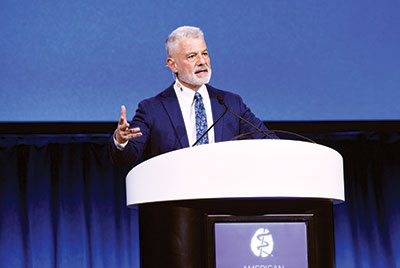Addiction Theme Sought To Educate Millions That Treatment Works

Information & Authors
Information
Published In
History
Keywords
- Petrous Levounis, M.D., M.A.
- Immediate past APA president
- Presidential address at opening session
- APA Annual Meeting
- Confronting Addiction From Prevention to Recovery
- Buprenorphine
- Naloxone
- Regulatory restrictions on prescribing
- Leveraging advocacy and communications
- American College of Physicians
- American Academy of Pediatrics
- American Academy of Addiction Psychiatry
- American Academy of Family Physicians
- American College of Obstetricians and Gynecologists
- Social media
- Television
- Print media
- Smita Das, M.D., Ph.D., M.P.H.
- Tauheed Zaman, M.D.
- Jeremy Kidd, M.D.
- Lief Fenno, M.D.
- James Sherer, M.D.
- 3.8 billion media impressions
Authors
Metrics & Citations
Metrics
Citations
Export Citations
If you have the appropriate software installed, you can download article citation data to the citation manager of your choice. Simply select your manager software from the list below and click Download.
For more information or tips please see 'Downloading to a citation manager' in the Help menu.
View Options
View options
Get Access
Login options
Already a subscriber? Access your subscription through your login credentials or your institution for full access to this article.
Personal login Institutional Login Open Athens loginNot a subscriber?
PsychiatryOnline subscription options offer access to the DSM-5-TR® library, books, journals, CME, and patient resources. This all-in-one virtual library provides psychiatrists and mental health professionals with key resources for diagnosis, treatment, research, and professional development.
Need more help? PsychiatryOnline Customer Service may be reached by emailing [email protected] or by calling 800-368-5777 (in the U.S.) or 703-907-7322 (outside the U.S.).
